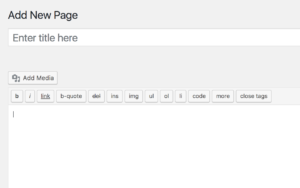Minification is one of the easier website optimization techniques. Even the simplest processor can shave a third off your CSS download size by concatenating separate file into one file and removing unnecessary characters. Typically, this involves deleting comments, white-space, and the last semi-colon in a rule set, e.g.
/* my page elements */
.element1, element2 {
font-family: sans-serif;
font-size: 1em;
padding: 0px 0em 0vh 0rem;
margin: 10px;
}.element1,element2{font-family:sans-serif;font-size:1em;padding:0px 0em 0vh 0rem;margin:10px}padding:0 0 0 0;padding:0;Keyframe 0% != 0
The first issue was the< @keyframes declaration:
@keyframes blink {
0% { background-color: #fff; }
50% { background-color: #000; }
100% { background-color: #fff; }
}0{background-color:#fff}Timing 0s != 0
Theanimation shorthand property represents the following longhand animation properties:
<animation-name> || <time> || <timing-function> || <time> || <animation-iteration-count> || <animation-direction> || <animation-fill-mode>
For example:
animation: blink 2s ease 0s;animation:blink 2s ease 0;animation-iteration-count value. Since that is zero, the animation will never start.
Mending the Minification Mess
You have two options if your minifier exhibits this behavior:- Use a better, newer or simpler minification process. The YUI Compressor received a fix for CSS3 animation in February 2014.
- Change the way you write code, i.e. use the keyframes
fromkeyword in place of0%and omit timings of0sor0msin shorthandanimationdeclarations.
Frequently Asked Questions (FAQs) on CSS3 Animation Minification
What is CSS3 Animation Minification and why is it important?
CSS3 Animation Minification is the process of reducing the size of CSS3 animation files to improve the loading speed of a webpage. It involves removing unnecessary characters such as spaces, line breaks, and comments from the CSS3 animation code. This is important because it enhances the user experience by reducing the time it takes for a webpage to load. Additionally, it can also improve the website’s SEO ranking as search engines favor websites with faster loading times.
How can I avoid muddles when minifying CSS3 animations?
To avoid muddles when minifying CSS3 animations, it’s crucial to maintain a clean and organized code. Use clear and descriptive names for your animations and avoid using unnecessary code. Additionally, using a reliable minification tool can help prevent errors and muddles. These tools not only minify your code but also check for any errors or inconsistencies that might cause issues.
What are some reliable tools for CSS3 animation minification?
There are several reliable tools for CSS3 animation minification. Some of the most popular ones include CSSNano, CleanCSS, and CSSO. These tools not only minify your CSS3 animations but also optimize them for better performance. They are easy to use and can significantly reduce the size of your CSS3 animation files.
Can minification affect the functionality of CSS3 animations?
If done correctly, minification should not affect the functionality of CSS3 animations. However, if the minification process introduces errors or removes necessary code, it can cause the animations to malfunction. Therefore, it’s important to use a reliable minification tool and thoroughly test your animations after minification.
How can I ensure the quality of my CSS3 animations after minification?
To ensure the quality of your CSS3 animations after minification, it’s important to thoroughly test them. This involves checking the animations on different browsers and devices to ensure they work correctly. Additionally, using a minification tool that provides a report of the changes made can help you identify any potential issues.
What is the difference between CSS3 animation minification and compression?
While both minification and compression aim to reduce the size of CSS3 animation files, they do so in different ways. Minification involves removing unnecessary characters from the code, while compression involves encoding the information in the file in a more efficient way. Both methods can be used together to achieve maximum size reduction.
Can I manually minify CSS3 animations?
Yes, you can manually minify CSS3 animations by removing unnecessary characters from the code. However, this can be a time-consuming process and there’s a risk of introducing errors. Therefore, using a minification tool is generally recommended.
How does CSS3 animation minification improve SEO ranking?
CSS3 animation minification improves SEO ranking by reducing the loading time of a webpage. Search engines favor websites that load quickly, as this enhances the user experience. Therefore, by minifying your CSS3 animations, you can improve your website’s loading speed and potentially boost its SEO ranking.
What are some best practices for CSS3 animation minification?
Some best practices for CSS3 animation minification include maintaining a clean and organized code, using clear and descriptive names for your animations, and using a reliable minification tool. Additionally, it’s important to thoroughly test your animations after minification to ensure they work correctly.
Can CSS3 animation minification affect the visual quality of the animations?
No, CSS3 animation minification should not affect the visual quality of the animations. The process only involves removing unnecessary characters from the code, not altering the animations themselves. Therefore, if done correctly, your animations should look the same after minification.
Craig is a freelance UK web consultant who built his first page for IE2.0 in 1995. Since that time he's been advocating standards, accessibility, and best-practice HTML5 techniques. He's created enterprise specifications, websites and online applications for companies and organisations including the UK Parliament, the European Parliament, the Department of Energy & Climate Change, Microsoft, and more. He's written more than 1,000 articles for SitePoint and you can find him @craigbuckler.


